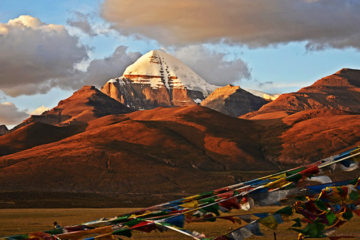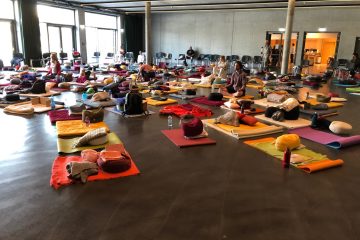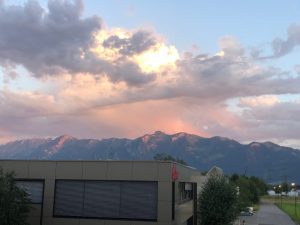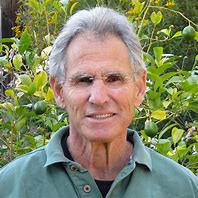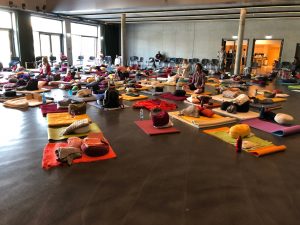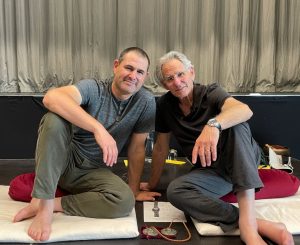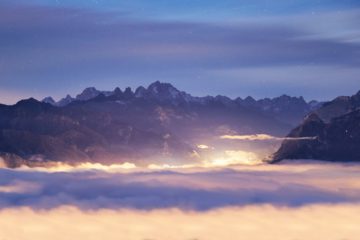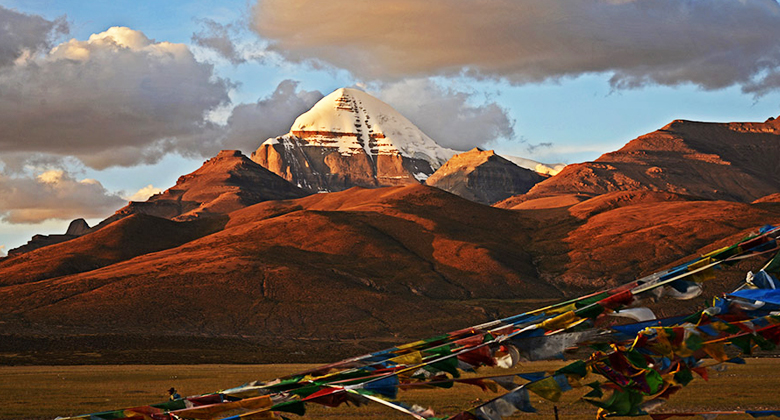
“Wenn deine Gedanken rasen und sich wiederholen, denke daran: Niemand kann dir so sehr schaden wie dein ungezähmter Geist. Wenn Sie in Resistenz gehen oder Schmerzen haben, denken Sie daran: Niemand kann Ihnen so sehr helfen wie ein ruhiger, klarer, gelassener Geist.” – Jack Kornfield
In einer Zeit von Krieg, Klimaerwärmung, Migration, Inflation, mentaler Erschöpfung und neues Arbeiten ist ein stabiler innerer Kompass essenziell, um in unruhige Gewässer zu navigieren. Dazu gehört ein stiller, unerschütterlicher Geist, der sich durch Sensationsmeldungen, negativen Nachrichten, sozialen Medien und Fake News nicht überwältigen lässt. Emotionen, die trotz der sich ständig ändernden VUCA-Welt (Volatil, Unvorhersehbar, Komplex und Mehrdeutig) beständig
bleiben. Und schließlich ein Körper, der standhaft, stabil und geerdet bleibt.
Die Achtsamkeit bietet eine Reihe von Meditationen, den Körper, den Geist und die Emotionen zu beruhigen. Dabei wird die Natur als Metapher für Unerschütterlichkeit und innerer Stille visualisiert. Der Berg, der stille See, der Baum, ein Fluss oder der Ozean und die darauf einwirkende Kräfte der Natur, eignen sich besonders um Vergleiche zum unstetigen Geist sichtbar zu machen.
Ein Berg widerspiegelt das Bild für Stabilität. Seine Verankerung mit dem Gestein der Erdkruste, seine majestätische hoch aufragende Form, die herabfallenden Hänge sind Eigenschaften, die Beständigkeit verkörpern.
Der heilige Berg, Sitz der Götter
In fast allen Kulturen steht der Berg für das Gott-Nahe, das Heilige. Gipfelkreuze zieren oft den Zenit, als würden sie dem Universum huldigen und eine Achse bilden zwischen Himmel und Erde. Die Gebirgskette der Himalaya, die sich von Afghanistan bis China streckt wird bei Hindus, Jainas, den Tibetische Bön und Buddhisten als „Sitz der Götter“ verehrt. Der Fuji in Japan, der Kailash in Tibet,
der Kilimanjaro in Tansania, der Uluru in Australien werden in ihren Kulturen als heiligen Berge geachtet. Einmal im Leben sollte jede Japaner:in den Fuji besteigen. Eine Umrundung des Kailash gilt als Tür zu Nirvana oder zur Erlösung. Auch auf der Reise zu sich selbst, suchen Menschen seit der Antike die Einsamkeit von Höhlen und Einsiedeleien im Gebirge auf, um Stille und tiefe Einsicht zu
erfahren. Fernab der Ablenkungen der Städte, ist eine Rückkehr ins Zentrum, in den Raum des Herzens möglich. In der Meditation transzendieren wir Raum und Zeit und gelangen auf unseren inneren Gipfel, der fernab von Worten liegt.
Meditation erlaubt uns den höchsten inneren Gipfel zu erklimmen
In der Berg-Meditation aus dem Mindfulness-Based Stress Reduction Programm verwandeln wir uns in unseren Lieblingsberg. Mit einem Bild von diesem Berg vor uns, können wir in gleicher Weise verwurzelt sein im Boden und unser Gewicht in der Schwerkraft verankern, in der Vorstellung von der Erdkruste gehalten zu werden. Die stabile Dreieckshaltung des Körpers bildet die Basis des Berges, unsere aufrechte Wirbelsäule ragt in den Himmel, unser Schädel ist wie der Gipfel, die Haare den Schnee, unsere Arme und Schultern ähneln die herabfallenden Flanken des Berges. Wir werden zum Berg und zum Inbegriff von Stabilität.
Um diese Erfahrung unserer eigenen Unerschütterlichkeit zu machen, folgt die kurze Beschreibung einer Anleitung der achtsamen Berg-Meditation, angelehnt an Jon Kabat-Zinn. Ihr könnt sie selbst ausprobieren oder über den QR-Code einer Audio-Anleitung folgen.
Die Berg-Meditation
Diese Meditation kann sowohl im Sitzen als auch im Liegen gemacht werden. Solltest Du sitzen, nimm Platz auf einem Stuhl, Kissen, Bänkchen oder auf dem Boden. Die Beine sind entweder gekreuzt oder in einer knienden Haltung. Zusammen mit dem Gesäß, bildest Du eine stabile Dreieckshaltung. Die Wirbelsäule ist aufrecht und entspannt. Die Arme fallen von den gelockerten Schultern herab und die Hände liegen auf den Oberschenkeln, in einer Mudra (Handhaltung) oder in Deinen Schoss. Der Kopf ist gerade, mit dem Kinn leicht nach vorne gebeugt. Du kannst die Augen offenhalten oder schließen, wie es für Dich am besten passt. Solltest Du sie offenlassen, richte den gelösten Blick auf einen Punkt vor Dir. Sitze in einer Position die Würde verkörpert.
Solltest Du liegen, lege Dich auf einer Matte auf den Boden oder auf ein Bett. Wenn der Rücken oder der Nacken Entlastung benötigt, lege ein Kissen unter die Knie oder den Kopf. Die Arme liegen parallel zum Körper mit den Handflächen nach oben, die Augen sind entweder halboffen oder geschlossen.
Bringe Deine Aufmerksamkeit zum Atem und nimm bewusst wahr, wie der Atem in den Körper hinein und aus dem Körper herausfließt. Ganz von selbst. Folge dem natürlichen Atem, ohne ihn verändern zu wollen. Atemzug für Atemzug (etwa eine Minute).
Stelle Dir nun vor Deinem geistigen Auge einen Berg vor. Deinen Lieblingsberg. Einen Berg, den Du bereits bestiegen hast, einen Berg, den Du gesehen hast oder einer aus Deiner Fantasie. Betrachte diesen Berg, als ob Du ihn zum ersten Mal siehst. Seine Form, die Struktur, die breite Basis, die in der Erde ruht, die Flanken, die ins Tal fallen, der aufragende Gipfel. Ist einer zu sehen oder mehrere Gipfel? Ist der Gipfel felsig, mit Schnee bedeckt oder grasig? Hat der Berg eine Baumgrenze? Oder eine Alm? Steht der Berg allein oder ist er Teil einer Kette?
Nimm wahr, wie würdevoll der Berg erscheint. Majestätisch, beständig, still, verankert im Boden.
Bringe das Bild des Berges in Dich. Verschmelze und werde eins mit dem Berg. Das Gesäß, die Knie und die Beine bilden die feste Basis, die mit dem Boden oder mit dem Stuhl verwurzelt sind. Die herabfallenden Arme bilden die steilen Flanken, der Kopf wird zum Gipfel des Berges.
DU bist der atmende Berg, verkörperst seine Natur, verwurzelt, zentriert und in der Stille ruhend.
Der Berg sitzt da in Wärme, Hitze oder Kälte, den Jahreszeiten gelassen begegnend. Der Berg bleibt in all dieser Veränderung still, annehmend, in Ruhe verweilend, unbeeindruckt von dem, was auf seiner Oberfläche geschieht. Stabil wie ein Fels in der Brandung. Der Berg verweilt einfach nur in sich selbst, während er geschehen lässt.
Indem wir in der Meditation selbst zum Berg werden, nehmen wir die Stabilität, die Kraft und die Unerschütterlichkeit des Berges in uns auf. Unsere aufwühlenden Gefühle, die Empfindungen im Körper oder die Gedankengänge des Geistes, unsere Krisen und Hochstimmungen ähneln dem Wetter auf dem Berg. Wenn wir der Wetterkarte unseres Lebens mit Achtsamkeit begegnen, können wir wie ein Berg unserer inneren und äußeren Welt begegnen, unbeugsam in unserer
Akzeptanz dessen, was geschieht. Als Berg lebend.
Wir kommen zum Ende dieser Meditation. Bringe die Aufmerksamkeit zum Spüren des Atems und des Körpers, wie er hier sitzt oder liegt. Spüre die Luft auf der Haut, den Kontakt der Fasern der Kleidung. Bewege Zehen- und Fingerspitzen, danach die Arme und Beine. Öffne vorsichtig Deine Augen.
Bedanke Dich bei Dir selbst für diese Auszeit. Nimm das Gefühl der inneren Ruhe mit in den Rest des Tages. Jedes Mal, wenn Du in eine emotional schwierige Situation kommst, besinne Dich auf den unerschütterlichen Berg, den Du in Dir trägst.
Quelle: In Anlehnung an Jon Kabat-Zinn, „Im Alltag Ruhe finden“
Autorin: Dr. Martina Esberger-Chowdhury, Heart-Mind Leadership, Achtsamkeits-Training
